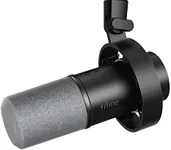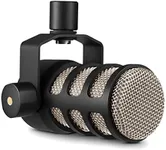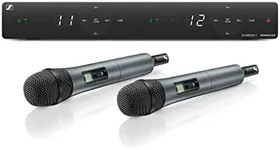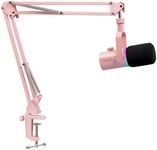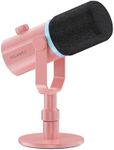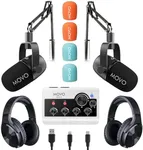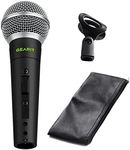Buying Guide for the Best Microphones For Live Vocals
Choosing the right microphone for live vocals is crucial for ensuring that your voice is captured clearly and accurately during performances. The right microphone can make a significant difference in the quality of your sound, so it's important to understand the key specifications and how they relate to your needs. Here are some important factors to consider when selecting a microphone for live vocals.Polar PatternThe polar pattern of a microphone describes how it picks up sound from different directions. This is important because it affects how much background noise is captured along with your voice. Common polar patterns include cardioid, supercardioid, and omnidirectional. Cardioid microphones pick up sound primarily from the front, making them ideal for live vocals as they minimize background noise. Supercardioid microphones have a tighter pickup pattern, offering even more isolation from surrounding sounds. Omnidirectional microphones pick up sound equally from all directions, which is generally not ideal for live vocals due to the potential for feedback and background noise. Choose a cardioid or supercardioid microphone if you need to isolate your voice from other sounds on stage.
Frequency ResponseFrequency response refers to the range of frequencies a microphone can pick up, from the lowest bass to the highest treble. This is important because it affects how accurately the microphone captures the nuances of your voice. A flat frequency response means the microphone picks up all frequencies equally, while a tailored frequency response may emphasize certain frequencies. For live vocals, a microphone with a slight boost in the mid-range frequencies (where the human voice typically resides) can help your voice cut through the mix. Consider your vocal style and the type of music you perform when choosing a frequency response.
SensitivitySensitivity measures how effectively a microphone converts sound into an electrical signal. This is important because it affects how much gain you need to apply on your mixer or amplifier. Higher sensitivity microphones require less gain, which can help reduce the risk of feedback. However, they may also pick up more background noise. Lower sensitivity microphones require more gain, which can be useful in loud environments. If you perform in quieter settings, a higher sensitivity microphone might be beneficial. For louder stages, a lower sensitivity microphone can help manage feedback and background noise.
DurabilityDurability refers to how well a microphone can withstand the rigors of live performance, including being dropped, bumped, or exposed to moisture. This is important because live performances can be unpredictable, and you need a microphone that can handle the wear and tear. Dynamic microphones are generally more durable than condenser microphones, making them a popular choice for live vocals. If you perform frequently or in challenging environments, prioritize a microphone known for its durability.
Handling NoiseHandling noise is the unwanted sound that occurs when you move or touch the microphone. This is important because it can be distracting and interfere with your performance. Some microphones are designed with shock mounts or other features to minimize handling noise. If you tend to move around a lot while performing or if you hold the microphone in your hand, look for a microphone with good handling noise reduction.
ConnectivityConnectivity refers to how the microphone connects to your sound system. This is important because it affects compatibility and ease of use. Most live vocal microphones use XLR connectors, which provide a balanced connection and are standard in professional audio equipment. Some microphones may also offer wireless options, which can provide more freedom of movement on stage. Consider your setup and whether you prefer the reliability of a wired connection or the flexibility of a wireless system.

